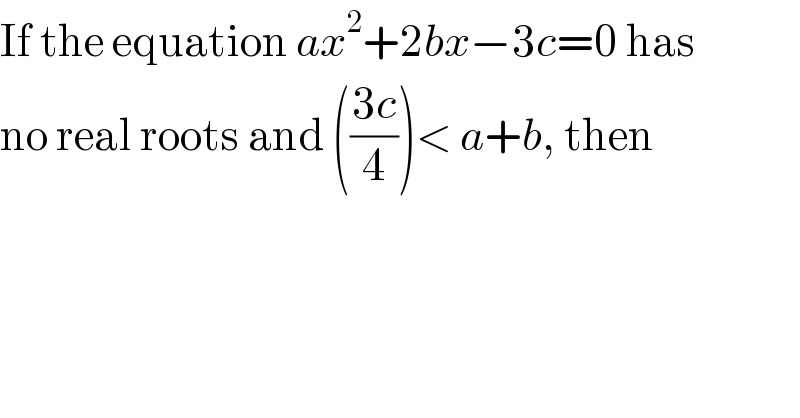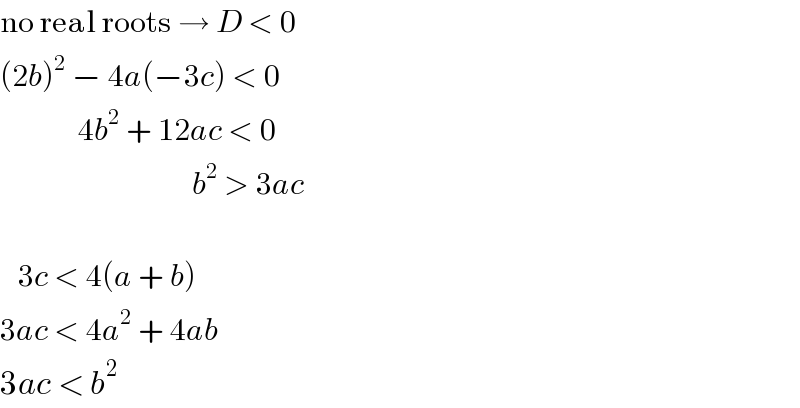
Question and Answers Forum
Question Number 32382 by hizmzm1 last updated on 24/Mar/18

Commented byMJS last updated on 24/Mar/18

Commented byMJS last updated on 24/Mar/18
![x^2 +((2b)/a)x−((3c)/a)=0 exactly one root: (x−r)^2 =x^2 +((2b)/a)x−((3c)/a) I. −2r=((2b)/a) ⇒ r^2 =(b^2 /a^2 ) II. r^2 =−((3c)/a) ⇒ −((3c)/a)=(b^2 /a^2 ) ⇒ c=−(b^2 /(3a)) but now we have 1 root. It disappears when we add a real number >0 ⇒ ⇒ c>−(b^2 /(3a)) ((3c)/4)<a+b ⇒ c<(4/3)(a+b) −(b^2 /(3a))<c<(4/3)(a+b) [⇒ −(b^2 /(3a))<(4/3)(a+b) case 1: a<0 −b^2 >4a(a+b) −4a^2 −4ab−b^2 >0 4a^2 +4ab+b^2 <0 (2a+b)^2 <0 ⇒ no solution case 2: a>0 leads to (2a+b)^2 >0 ⇒ a>0]](Q32410.png)
Answered by Joel578 last updated on 24/Mar/18

Commented byMJS last updated on 24/Mar/18

Answered by saru53424@gmail.com last updated on 24/Mar/18

